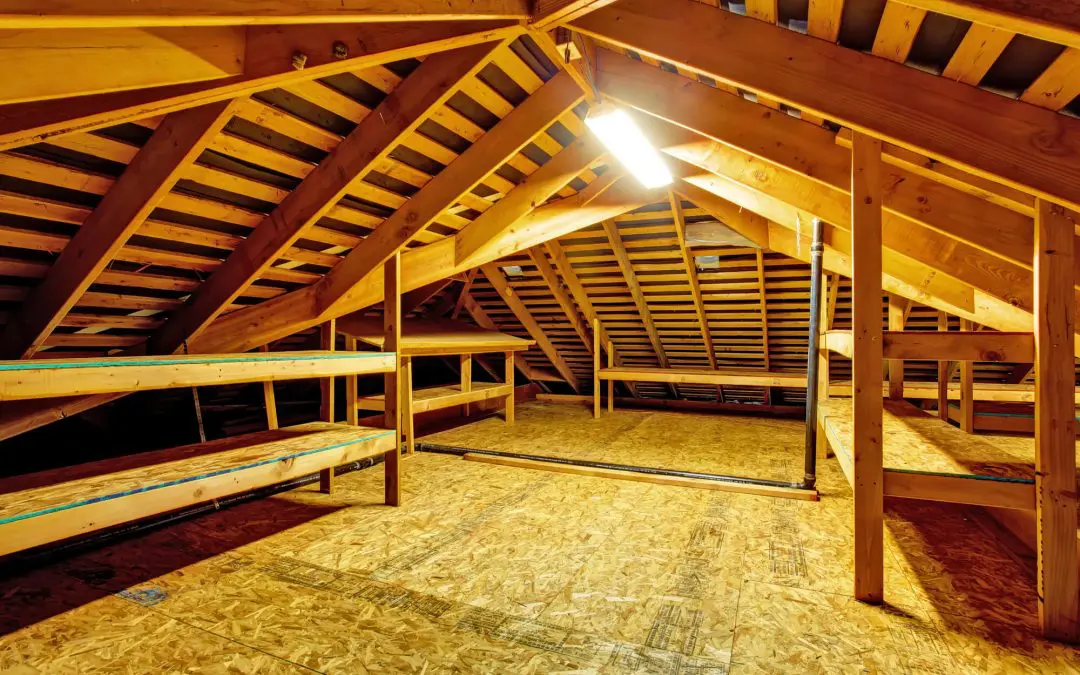Attic ventilation plays a bigger role in your home’s comfort and performance than most people realize. If your attic can’t breathe properly, it affects your energy bills, your roof’s lifespan, and even the air quality inside your home. Good airflow in the attic helps regulate temperature and moisture year-round, and without it, you’re setting your home up for a long list of preventable issues.
Let’s break down what attic ventilation does, why it matters, and how to spot problems before they become expensive repairs.
What Attic Ventilation Does
The idea behind attic ventilation is simple: let air flow in and out so your attic doesn’t trap heat and moisture. This is usually done with intake vents (at the soffits or eaves) and exhaust vents (at the ridge or roof). When installed correctly, this creates a constant flow of fresh air that helps keep the attic cool and dry.
In the summer, ventilation helps move out the hot air that builds up under your roof. That can reduce the load on your HVAC system and lower your cooling costs. In the winter, ventilation helps keep the attic cold so that warm air from your living space doesn’t cause snow on the roof to melt unevenly, which can lead to ice dams. It also helps carry away moisture from everyday activities like cooking, showering, and laundry—moisture that rises and can get trapped in the attic if there’s nowhere for it to go.
Signs You Have Poor Attic Ventilation
Most homeowners don’t think about attic ventilation until there’s a problem. The signs are easy to miss, but they add up over time.
If your attic feels like a sauna in the summer, that’s a clue your ventilation isn’t keeping up. You might also notice your second floor stays hotter than the rest of the house. In the winter, you might spot frost or condensation on the underside of your roof sheathing. That moisture can lead to mold, mildew, and eventually wood rot. Stains on ceilings, musty smells, and peeling paint can also be traced back to poor attic airflow.
Another red flag is when shingles age faster than expected. If your roof looks worn out before its time, trapped heat in the attic might be the cause.
Common Causes of Bad Ventilation
Sometimes, the problem is a lack of vents altogether. Other times, the vents are there, but they’re blocked by insulation, dirt, or debris. It’s also common for older homes to have unbalanced systems—more intake than exhaust or the other way around. That imbalance prevents proper airflow and reduces the effectiveness of the entire system.
Another issue is bathroom and kitchen exhaust fans that dump moist air directly into the attic. This adds extra moisture to a space already at risk for humidity problems.
Why It Matters for Energy Efficiency
An attic that holds onto heat forces your air conditioner to work harder. That means higher utility bills and a system that wears out faster. In winter, poor ventilation contributes to uneven temperatures throughout the house and can make your insulation less effective. When warm, moist air gets trapped, it can cause insulation to clump, settle, and grow mold. That kills its R-value and leaves you with less protection against outside temperatures.
Getting the ventilation right supports your insulation and helps your HVAC system do its job efficiently. It’s one of those upgrades that pays off in lower energy costs and fewer headaches over time.
What a Properly Ventilated Attic Looks Like
When everything works as it should, your attic stays close to the outdoor temperature—cool in the summer, cold in the winter. You won’t find signs of moisture or mold, and your roofing materials will age at a normal rate. The indoor temperature will be more consistent, and your energy bills will be lower.
You don’t need to be a roofer or builder to understand the basics. Intake vents allow fresh air to enter at the lowest part of the attic, and exhaust vents allow hot, moist air to escape at the highest point. The key is balance and unobstructed airflow.
If you’re not sure how your attic is doing, a quick inspection can tell you a lot. If you’re not comfortable climbing around up there, a home inspector can give you a clear picture and point out anything that needs attention.
FAQs
How do I know if my attic is adequately ventilated?
If your attic is the same temperature as the outside air and shows no signs of moisture or mold, that’s a good start. You can also check for a balanced system of intake and exhaust vents or have a home inspector check for you.
Can too much ventilation be a problem?
It’s less common, but yes. Too many vents, especially if they’re not balanced, can cause air to short-circuit and reduce effectiveness. You need the right amount of intake and exhaust working together.
Do attic fans help?
Sometimes. Powered attic fans can help move air out, but they aren’t a replacement for proper passive ventilation. If not installed carefully, they can also draw air from your home instead of from intake vents.
Is attic ventilation a DIY project?
Some homeowners can handle minor improvements like clearing blocked soffit vents, but installing or modifying a full ventilation system is better left to professionals. Small mistakes can lead to bigger problems down the road.
Does every roof need ventilation?
Almost all homes benefit from attic ventilation, especially in areas with hot summers or cold winters. Some newer roofing systems are designed without traditional attic spaces, but those are the exception, not the rule.
Legacy Property Inspections offers home inspection services in Southeast Georgia. Contact us to request an appointment.

